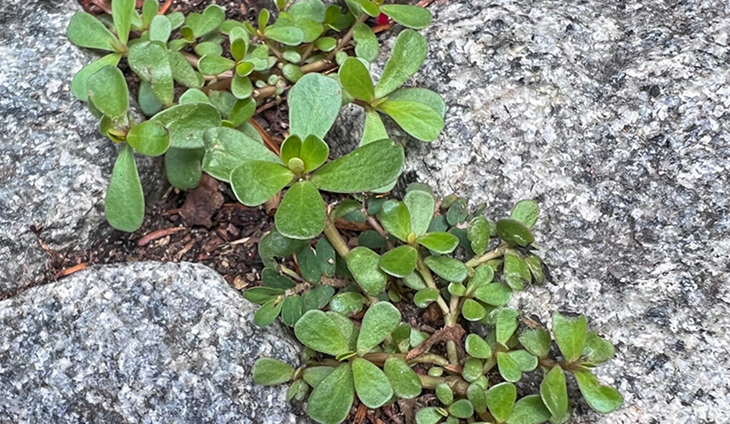
What happens when there is drought? Farmers have to work harder just to provide their plants with the much-needed sustenance, and this means that they need water. With water scarcity, many of their crops die, which means that there’s less food available for the consumers.
Researchers have been searching for a plant that can thrive even amidst drought while making sure that this plant is packed with all the essential vitamins and nutrients. A common weed that was once overlooked may just offer vital clues about creating drought-tolerant crops.
Yes, in a world beset with problems that come hand in hand with climate change, a drought-proof weed may be the key to addressing world hunger. This was according to a new research made. The common weed goes by the name purslane, and as stated earlier, this holds important secrets that may aid man in the development of important drought-resistant crops.
Yale scientists talk in detail about how Portulaca oleracea amalgamates two distinct metabolic pathways so that it is able to create a novel type of photosynthesis that allows its system to survive throughout the dry season without sacrificing its productivity.
“This is a very rare combination of traits and has created a kind of ‘super plant’ — one that could be potentially useful in endeavors such as crop engineering,” said Erika Edwards, She is a Yale professor of ecology and evolutionary biology and senior author of the paper that was recently published in the journal Science Advances.
Over time, plants have managed to evolve on their own. Some have developed a variety of distinct mechanisms to make improvements on their photosynthetic abilities. An example would be corn and sugarcane. These have developed the C4 photosynthesis. This enables them to remain productive even when exposed to high temperatures.
Succulents such as cacti and agaves, on the other hand, now have another type of photosynthetic capability called CAM photosynthesis. This enables them to survive in deserts and places that don’t get much water. Both C4 and CAM have differing functions, they still but recruit the same biochemical pathway to act as “add-ons” when it comes to food processing. As for the purslane plant, this is considered rare because it has developed both the abovementioned evolutionary adaptations. They can be highly productive as well as survive during drought. The combination doesn’t happen often, and this makes the finding interesting. Most scientists say that C4 and CAM operated independently as they work within the plant’s leaves.
As for the Yale team that this discovered this, the group was led by co-corresponding authors and postdoctoral scholars named Jose Moreno-Villena and Haoran Zhou. They had conducted a spatial analysis of gene expression found within the leaves of the purslane plant. They discovered that both the C4 and CAM activities have been completely consolidated. This means that both operate in the same cells, with products of CAM reactions that are found processed by the C4 pathway. This may not sound like much to those unfamiliar with the method, but this unique system provides unusual levels of protection for a C4 plant when they get no water.
The other benefit to be noted is that the plant is also one of the most nutritious greens that you can include in your diet. This was stated by the National Institute of Health. They reported on its Omega 3 content in their study. To get your hands on this, the weed is available in farmer’s markets and Hispanic stores found around the US. It goes by the other popular name of Verdolaga. It’s also considered a delicacy in certain Middle Eastern countries and they include it in their cuisines. In Afghanistan, for example, the leaves are cooked together with mung beans to create something so delicious.
In order to apply the findings made, the researchers managed to build metabolic flux models that saw how an integrated C4+CAM system emerged. Their findings mirror the experimental results they witnessed. And being able to fully comprehend this new metabolic pathway, the experts could come up with better ways to engineer common crops such as corn so that they can survive, or even thrive, during drought seasons, as the authors stated.
“In terms of engineering a CAM cycle into a C4 crop, such as maize, there is still a lot of work to do before that could become a reality,” Edwards said. “But what we’ve shown is that the two pathways can be efficiently integrated and share products. C4 and CAM are more compatible than we had thought, which leads us to suspect that there are many more C4+CAM species out there, waiting to be discovered.”
What are your thoughts? Please comment below and share this news!
True Activist / Report a typo


